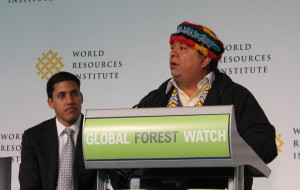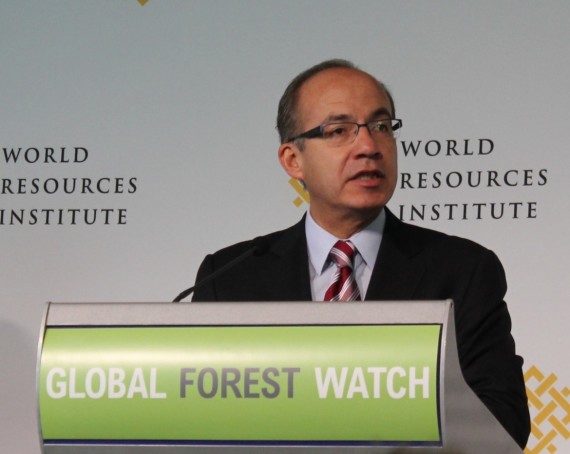WASHINGTON – If a tree falls in the forest and there is no one around to hear it, will it make noise? But now, someone will always be around to hear it.
The World Resources Institute, with Google and 40 other global partners, launched a website Thursday that helps monitor forests, Global Forest Watch.
“Because of amazing developments in the availability of billions of pieces of satellite data … it is possible to bring, for the first time ever, really real-time data at a very local level to everybody in the world,” Andrew Steer, president and CEO of the institute, said. “That is what Global Forest Watch is all about, and it is free.”
The forest watch project was inspired by outdated forest loss data and the lack of access to it.
Nigel Sizer, director of Global Forest Watch, said the first report was released 15 years ago. It had impact in Canada, Indonesia, Brazil and other countries, but it was still built around printed material, which wasn’t updated frequently and had no community input.
“We realized that for the first time it might be possible to create a global, easy-to-use system that can monitor forests in near real time,” Sizer said. “After much effort, and several dozen other partners joining in, can you imagine how proud and happy we are to be here today to launch Global Forest Watch?”
Sizer said Global Forest Watch combines the global power of high-resolution satellite imagery, high-powered cloud computing, open data and human networks in a system that will cover more than 200 countries.
Satellite data will be used to create maps showing deforestation, which can be updated by witnesses.
“You don’t need a Ph. D. in remote sensing science to use Global Forest Watch,” Sizer said. “If you can use Google maps to find a friend’s house, then you can use Global Forest Watch to understand what is happening to forests in your neighborhood, across your entire country or across the world.”
The University of Maryland and Google presented data showing the loss of 568 million acres of tree cover from 2000 to 2012.
The program wants businesses, governments and local communities to get involved to stop deforestation.
“You can’t solve problems that you can’t see,” Rajiv Shah, administrator for the U.S. Agency for International Development, said. “And now that we can see where deforestation is happening, we will also target our programming and our funding to those communities to reduce the level of deforestation that is taking place in the areas where it is more acute.”

Transparency is also something Global Forest Watch is trying to achieve.
Kerri-Ann Jones, assistant secretary of state for the Bureau of Oceans and International Environmental and Scientific Affairs, said Global Forest Watch can be beneficial to all governments and corporations.
“On one level, it will help make the results of our decisions and actions much more visible,” Jones said. “Transparency is very a good thing, but more importantly it can serve as an important tool for us to better serve our citizens.”
Felipe Calderon, former Mexican president, said the new program will be revolutionary.
Calderon, who was president from 2006 to 2012, saw deforestation decrease in Mexico while he was president, especially in the state of Michoacan.
“The annual forest loss in the core zone of the research went from almost 700 acres a year to zero two years ago,” Calderon said. “We started working with Google with an experimental tool similar to this. … This project is being born today, here, but I can say its conception was made in Mexico.”
Calderon said that fighting to save Mexico’s forest could have been easier with the new program.
“I wish I could have had the Global Forest Watch already in place when I was president,” Calderon said.
Juan Carlos Jintiach, indigenous leader of the Shuar Nation in Ecuador, said the new program will benefit the indigenous tribes as well.
“Indigenous people have the opportunity to share with the world what is going in our territories,” Jintiach said. “With Global Forest Watch we can demonstrate the contributions that we have made for centuries to conservation and biodiversity worldwide.”
Alejandro Alba is a senior multimedia journalism major at UTEP. He is currently participating in the Scripps Howard Foundation’s Semester in Washington Program. He may be reached at [email protected].










